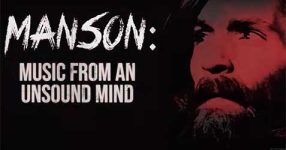Growing up in 1950s Kenya, there was a belief that the British, as imperialists, were upholders of justice. However, the documentary “A Very British Way of Torture” challenges this narrative. It delves into the Malmo Uprising, a violent freedom movement in Kenya during the 1950s, exploring the brutalities committed by the British colonial forces, a side often neglected by historians.
Intriguingly, the release of new documents sheds light on the institutionalization of British atrocities. From London to Kenya, the orders were clear, and the film uncovers how the British tried to justify and hide their actions. This revelation forces a paradigm shift, questioning the assumed civility of the British Empire.
The Hidden Secrets of Hanslope Park
As the British left Kenya in 1963, they took over 1,500 top-secret government files with them, stashing them away in a facility called Hanslope Park linked to GCHQ. The documentary explores the secrecy surrounding these files and the denial of their existence when requested. The elderly victims from rural Kenya, seeking justice after more than half a century, share their journey, highlighting the obstacles faced in bringing these atrocities to light.
The film uncovers a legal case in 2011-2012, where the British government settled out of court to avoid a full hearing. Only a fraction of the documents was used, and it is only now, years later, that historians can closely examine the revelations. The narrative exposes the intricate web of deception and denial, providing a much fuller account of the British government’s involvement in the atrocities committed in Kenya during that tumultuous period.
Brutality Unveiled: The Malmo Uprising
In 1952, Kenya was a British colony, officially overseen by the colonial office in the UK. The film challenges the romanticized notion of British assistance, revealing that the British came to Kenya to exploit rather than aid. The documentary narrates the Malmo Uprising, portraying it as a peasant uprising against the exploitation of white settlers with vast land holdings.
The narrative shatters the simplistic view of a conflict between good and evil, exposing the British counter-insurgency effort as equally brutal. Propaganda, the role of loyalists, and the hidden stories of torture in Home Guard posts come to light, revealing the harsh reality of the British response to the Malmo Uprising.
The Deceptive Path to Independence
The documentary unveils the intricate political maneuvers to hide the British atrocities in Kenya. As Winston Churchill takes a keen interest in the situation, investigations into human rights abuses by officials like Duncan McPherson reveal disturbing details. However, there is a deliberate obstruction of justice at the highest levels, hindering the prosecution of those responsible.
The film showcases how the colonial secretary, Alan Lennox-Boyd, and the British government were fully aware of the torture and ill-treatment, yet attempted to distance themselves from it. The revelation of documents in the Haslop disclosure provides a clearer picture of the deliberate decisions to suppress investigations, raising questions about the ethical standards of the British government during that era.
Legalizing Torture: The Disturbing Aftermath
The documentary exposes the unintended consequences of efforts to investigate and bring justice. The legal gymnastics employed to justify torture, such as the creation of a distinction between “compelling force” and “punitive force,” offer insight into the British government’s willingness to condone torture for its goals.
The film narrates the horrifying experiences in detention camps, where irreconcilable Mau Mau supporters faced intense torture. The case of Samuel Githu becomes a focal point, as it reveals the complicity of high-ranking officials, including Gavin, in condoning and participating in the torture of detainees. The attempt to legalize such actions through vague distinctions sets a dangerous precedent, tarnishing Britain’s reputation on the global stage.
The Explosive Aftermath: Hola Massacre
The tensions between detainees and warders reach a breaking point in the Hola detention camp, resulting in a horrific massacre. The film details the events leading up to the tragedy, with 11 men losing their lives and 72 others hospitalized. The parliamentary inquiry and public outcry that follow force the British government to reassess its stance on Kenya.
As “A Very British Way of Torture” concludes, it highlights the impact of these revelations on Kenya’s path to independence. The explosive parliamentary pressure prompts a reevaluation of the British narrative, pushing for a hastened exit from Kenya. The documentary leaves viewers pondering the contested nature of violence, justice, and the long-lasting repercussions of colonial brutality.












